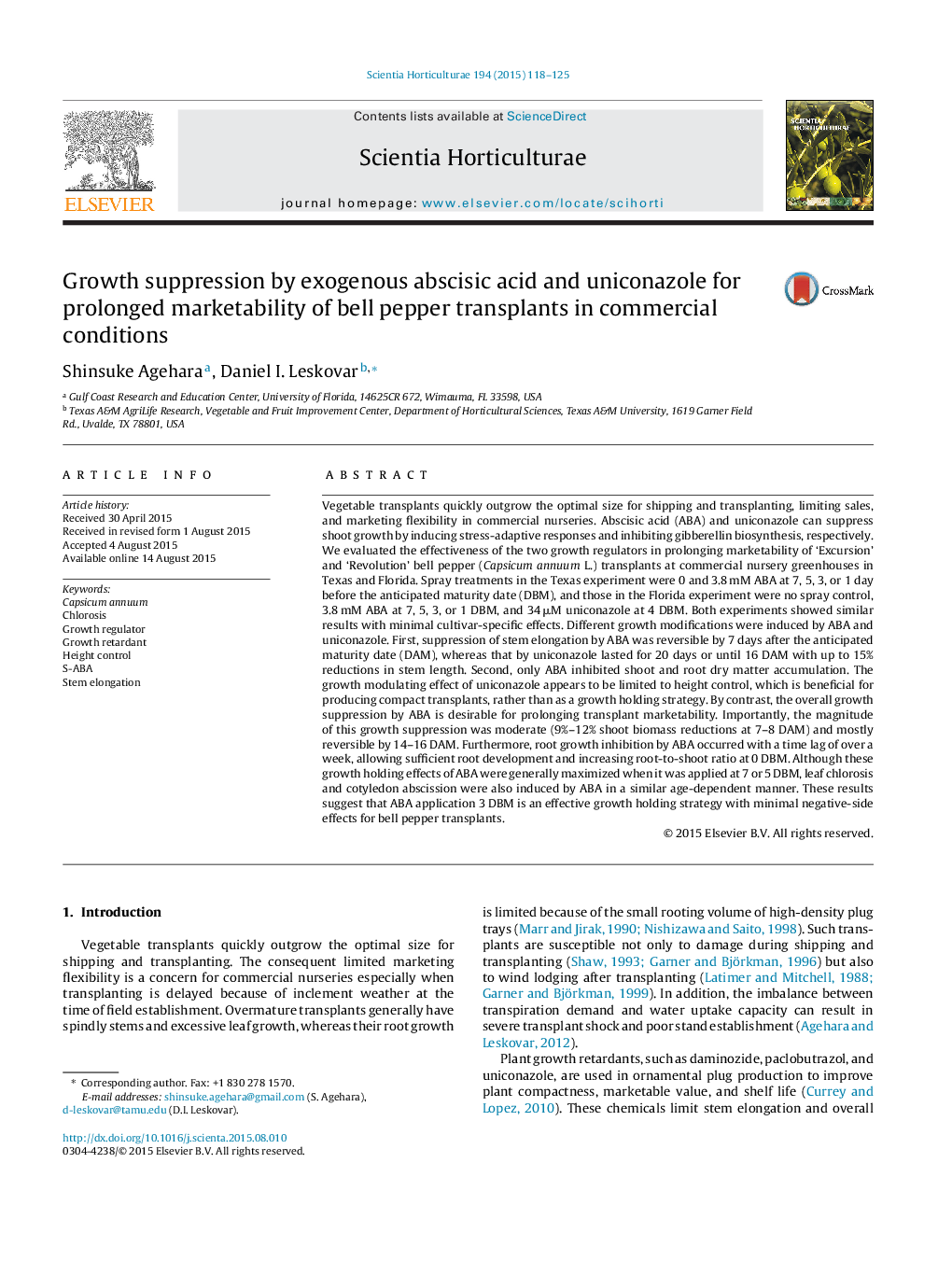| Article ID | Journal | Published Year | Pages | File Type |
|---|---|---|---|---|
| 4566322 | Scientia Horticulturae | 2015 | 8 Pages |
•We applied ABA and uniconazole to bell pepper transplants 1–7 days before maturity.•ABA applied 3 days before maturity can prolong transplant marketability.•Uiconazole is more beneficial for height control than for growth holding.
Vegetable transplants quickly outgrow the optimal size for shipping and transplanting, limiting sales, and marketing flexibility in commercial nurseries. Abscisic acid (ABA) and uniconazole can suppress shoot growth by inducing stress-adaptive responses and inhibiting gibberellin biosynthesis, respectively. We evaluated the effectiveness of the two growth regulators in prolonging marketability of ‘Excursion’ and ‘Revolution’ bell pepper (Capsicum annuum L.) transplants at commercial nursery greenhouses in Texas and Florida. Spray treatments in the Texas experiment were 0 and 3.8 mM ABA at 7, 5, 3, or 1 day before the anticipated maturity date (DBM), and those in the Florida experiment were no spray control, 3.8 mM ABA at 7, 5, 3, or 1 DBM, and 34 μM uniconazole at 4 DBM. Both experiments showed similar results with minimal cultivar-specific effects. Different growth modifications were induced by ABA and uniconazole. First, suppression of stem elongation by ABA was reversible by 7 days after the anticipated maturity date (DAM), whereas that by uniconazole lasted for 20 days or until 16 DAM with up to 15% reductions in stem length. Second, only ABA inhibited shoot and root dry matter accumulation. The growth modulating effect of uniconazole appears to be limited to height control, which is beneficial for producing compact transplants, rather than as a growth holding strategy. By contrast, the overall growth suppression by ABA is desirable for prolonging transplant marketability. Importantly, the magnitude of this growth suppression was moderate (9%–12% shoot biomass reductions at 7–8 DAM) and mostly reversible by 14–16 DAM. Furthermore, root growth inhibition by ABA occurred with a time lag of over a week, allowing sufficient root development and increasing root-to-shoot ratio at 0 DBM. Although these growth holding effects of ABA were generally maximized when it was applied at 7 or 5 DBM, leaf chlorosis and cotyledon abscission were also induced by ABA in a similar age-dependent manner. These results suggest that ABA application 3 DBM is an effective growth holding strategy with minimal negative-side effects for bell pepper transplants.
